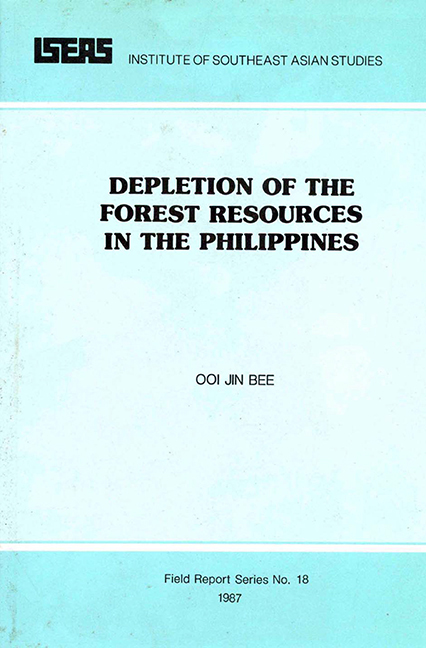Book contents
III - Loss of the Forest Cover
Published online by Cambridge University Press: 21 October 2015
Summary
Two major forces have worked towards the continual loss of the forest cover of the Philippines since the beginning of this century. These are: (1) the large-scale commercial exploitation of the timber resources of the forests; and (2) the demand for the land on which the forests stand.
Timber Exploitation
The history of timber exploitation goes back to the period of the Spanish occupation, when the finest quality timber trees were felled for the construction and repair of the Spanish galleons plying the trade routes from east to west. Although exploitation was confined to the more accessible lowland forests, the extent of deforestation was severe enough, particularly in the islands of Cebu and Bohol, to spur the Spanish Government to issue a Royal Decree in 1974 prohibiting the felling of trees for commercial purposes in problem areas (Makil 1982).
There were, nevertheless, very substantial quantities of commercially valuable durable hardwoods that remained unexploited, especially in the largest islands of Mindanao, Luzon, and the Visayas. During the American period of occupation the output of logs and lumber increased at a modest rate – from about 100,000m3 in the late 1800s to about 1.6 million m3 in 1935, an average rate of increase of 11 per cent per annum (Fig. 1). The total cut from 1908 to 1935 amounted to 20.8 million m3, or only 2.6 per cent of the 800 million m3 of standing timber estimated by Whitford (1911) to have covered the Philippines in 1910. Forest products, mainly timber, contributed an average of 3.4 per cent to the total value of all exports during the period 1937-40.
At the end of World War II it was estimated that as much as three-quarters of the Philippines was still under forest (Myers 1980). Large-scale exploitation of the forests began soon after the Philippines attained its independence in 1946.
- Type
- Chapter
- Information
- Depletion of the Forest Resources in the Philippines , pp. 13 - 24Publisher: ISEAS–Yusof Ishak InstitutePrint publication year: 1987

